#climate action
Text



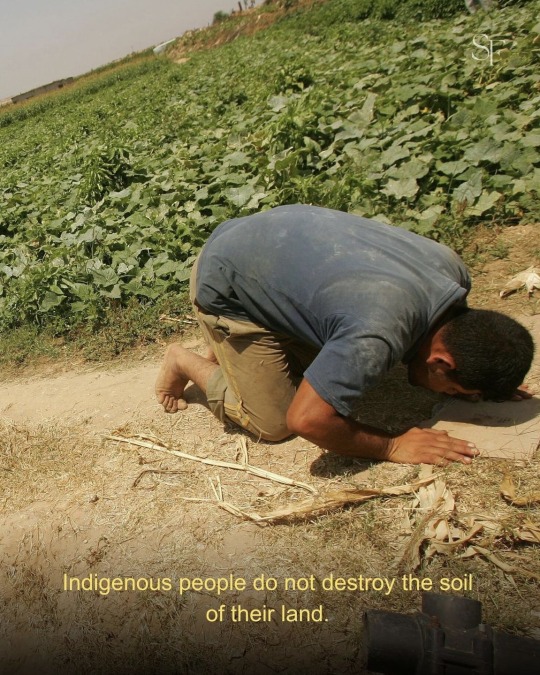

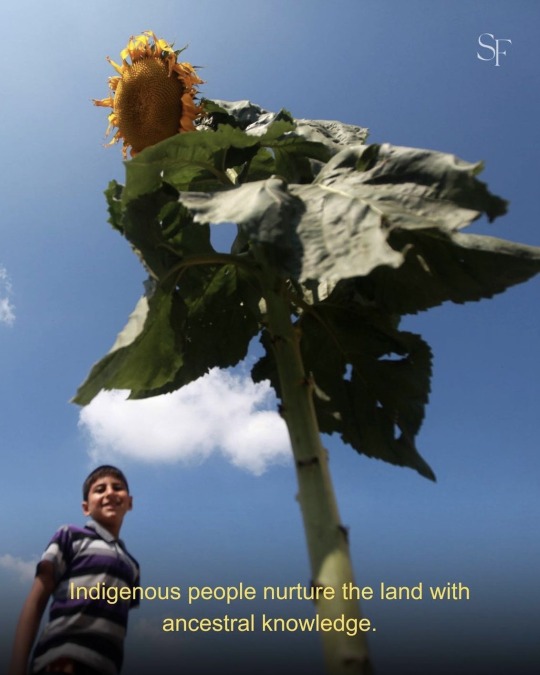




@/savoirflair: On #EarthDay, it's crucial to recognize that the guardians of our planet are its indigenous peoples, who have historically maintained biodiversity and preserved natural resources through deep-rooted practices and ancestral wisdom. There is no climate justice without human rights, and we cannot celebrate our planet without honoring its original and eternal custodians. Without the stewardship of indigenous populations like the Palestinians, our environmental efforts are incomplete. Their resilience and ongoing struggle underline that Earth Day is not only a call for environmental action but also for justice and the recognition of the rights of indigenous guardians who have nurtured the land for centuries.
2K notes
·
View notes
Text
REBLOG THIS TO TELL CLIMATE CHANGE DENIERS TO GET THE HECK OFF YOUR BLOG
#reblog#chain post#not forced#hellsite#climate#climate justice#climate crisis#climate change#climate action
66 notes
·
View notes
Text

The Miracle Worker 🐝
This Earth Day, Remember the Bees
Bees are essential pollinators that play a critical role in our ecosystem and food system. Honey bees are responsible for pollinating many crops that provide us with food, including fruits, vegetables, nuts, and seeds. Unfortunately, honey bee populations have declined in recent years due to habitat loss, pesticide exposure, and disease. This decline has significant implications for our food system and the environment, making it crucial to raise awareness and take action to protect honey bees.
Here are some easy ways everyone can protect our honey bees this Earth Day:
Plant bee-friendly flowers: Planting flowers and herbs is an excellent way to attract bees to your garden. Bees need a diverse range of flowers to collect pollen and nectar.
Avoid pesticides: Chemicals used in pesticides can be toxic to bees and other beneficial insects. Try using organic gardening methods to control pests in your garden, and avoid using pesticides whenever possible.
Honey bees need water: They use water to regulate the temperature inside their hives during hot weather. It’s essential to ensure shallow water, with landing or perching areas for the bees.
Reduce your carbon footprint by making environmentally conscious choices in your daily life. Climate change can negatively impact honey bee populations, so reducing your carbon footprint can help mitigate this effect.
Support local beekeepers: Buying honey from local beekeepers not only supports their business but also promotes the health and welfare of bees. Local beekeepers also play a crucial role in pollination and preserving bee populations.
Educate others: Raising awareness about the importance of bees is crucial to their conservation. Share information with your friends and family about the role of bees in our ecosystem and the challenges they face
27 notes
·
View notes
Text
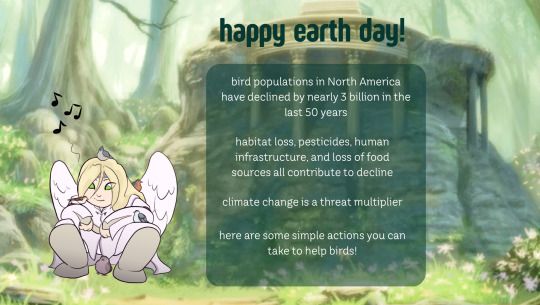





some birds with some basic bird conservation tips for earth day! 🥰
(ETA: managed to post this with a slide missing. it’s fixed now!)
alt text & relevant links below the cut
[a series of images with Serenes Forest as a backdrop, also featuring reyson, leanne, and rafiel from the fire emblem tellius games.
slide 1: reyson crouches singing to various songbirds. transcription: happy earth day! bird populations in North America have declined by nearly 3 billion in the last 50 years. habitat loss, pesticides, human infrastructure, and loss of food sources all contribute to decline. climate change is a thread multiplier. here are some simple actions you can take to help birds!
slide 2: leanne sits beside a window, nursing a head injury. transcription: windows! an estimated 1 billion birds suffer window collisions every year in the US and canada. lights can confuse birds - help by turning off your lights or drawing curtains at night. further birdproof your windows by using decals, tape, or paint to disrupt the reflections! (you can purchase window decals just for this purpose!)
slide 3: reyson recoils dramatically from ranulf in cat form, who mutters “bro I am just sitting here.” transcription: cats. domestic cats are not natural predators in north america, and kill 1-4 billion birds each year. many of these cats are feral or stray: support local shelters and rescues with trap/neuter/release programs to reduce feral cat populations. if you own a cat, don’t let your cat outside unsupervised! leash train your boi or build a catio.
slide 4: rafiel ruefully holds yune the bird in his hands; she is lying stunned. transcription: beware pesticides. insecticides are the biggest bird killer. neonicotinoids (or “neonics”), deveoped since the ban of DDT, are used everywhere in the US - farms, cities, and suburbs. they infect entire food chains systemically. avoid neonics in your own home and garden: if you buy plants, read labels to avoid neonic-treated specimens. buy organic produce if you can. the EU has banned outdoor use of many neonics, but the US has not - support local and national initiatives to regulate insecticide use!
slide 5: get involved! this is all bigger than the individual. climate change is a big issue and we can’t fight it alone. seek resources for native plants, bird feeding, and bird monitoring efforts in your area. be sure to look up: your local audubon society; conservation orgs in your area; and climate action plans by indigenous communities near you.
final slide: sources and resources to look up:
bird populations: https://www.birds.cornell.edu/home/bring-birds-back/
pesticides: https://chicagobirdalliance.org/blog/2023/5/20/year-of-helping-birds-avoid-pesticides
cats: https://abcbirds.org/program/cats-indoors/
windows: https://www.fws.gov/library/collections/threats-birds-collisions
cornell ornithology lab: birds.cornell.edu
american bird conservancy: abcbirds.org
national audubon: audubon.org
hawkwatch international: hawkwatch.org
#fire emblem#tellius#reyson#rafiel#leanne#fe9#making the birds into environmental stewards like bambi but angstier lets go
26 notes
·
View notes
Text

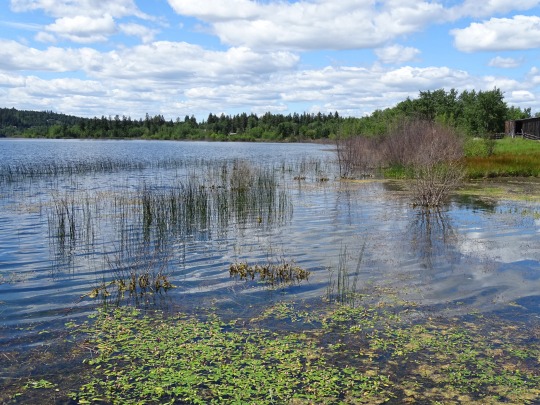
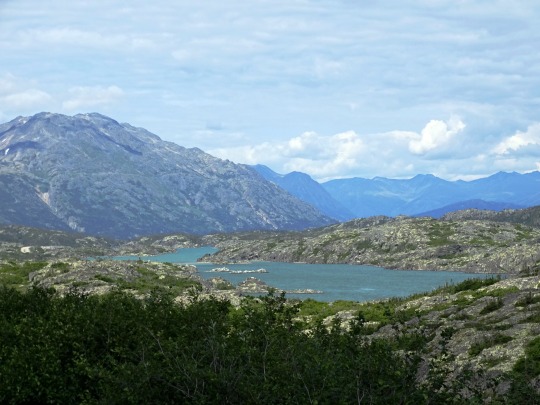


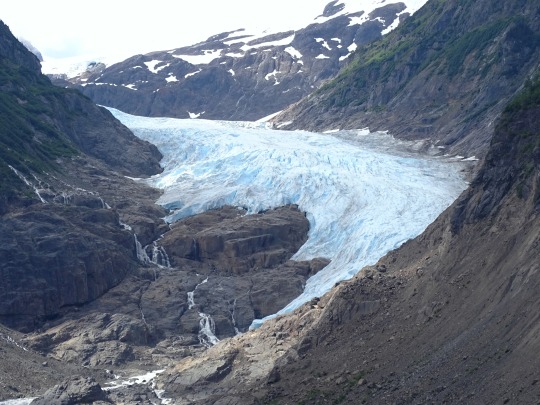


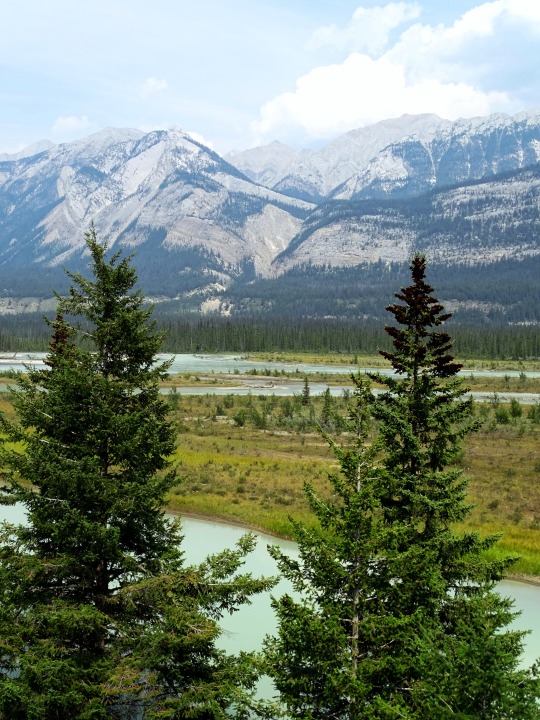


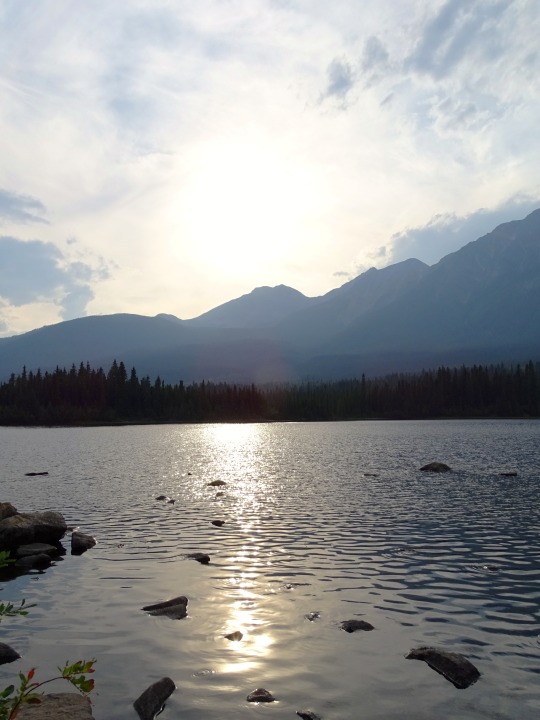



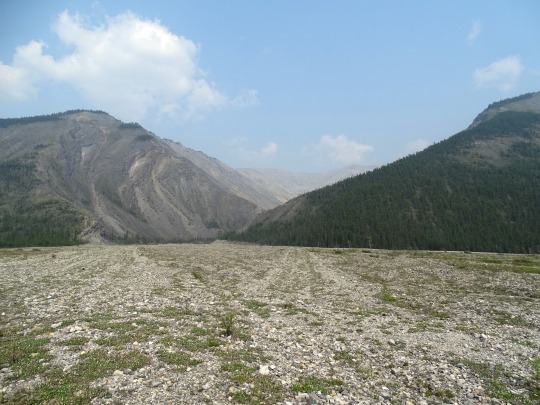

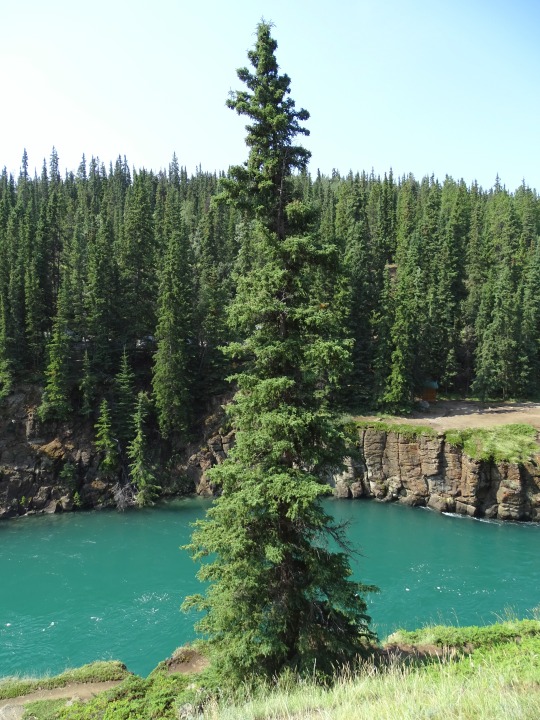
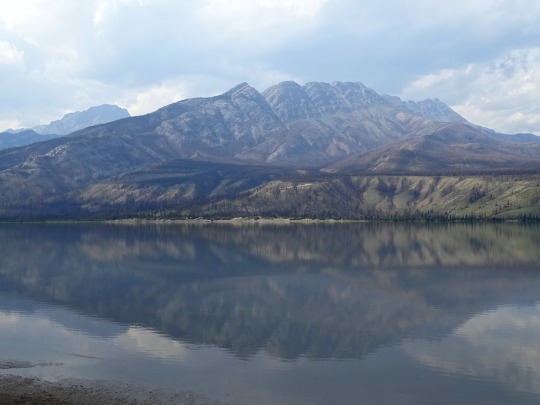

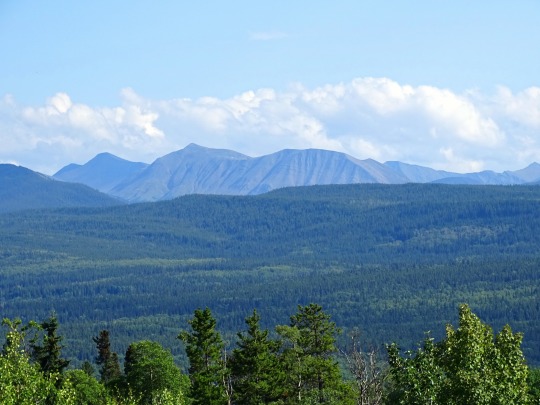
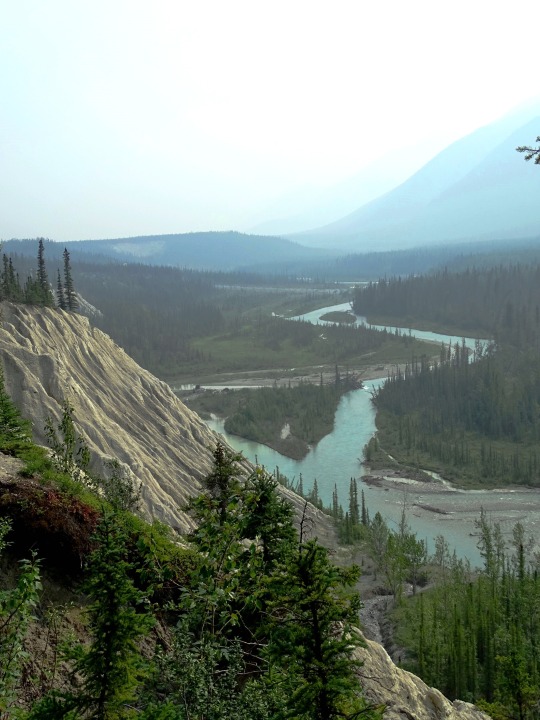
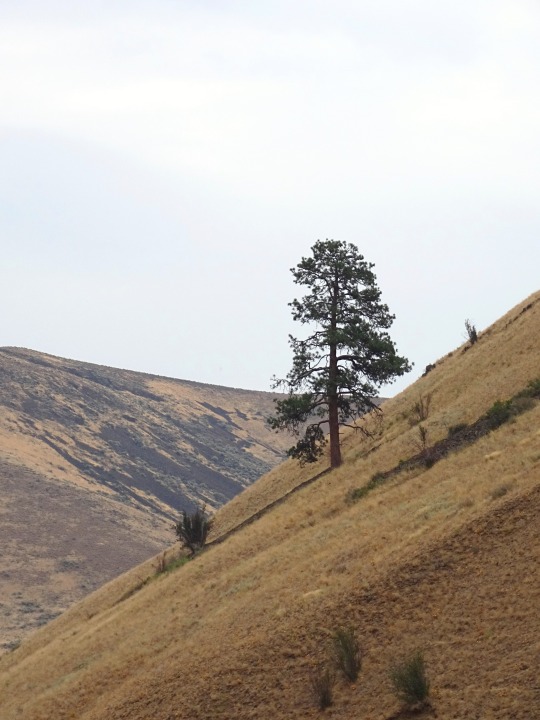
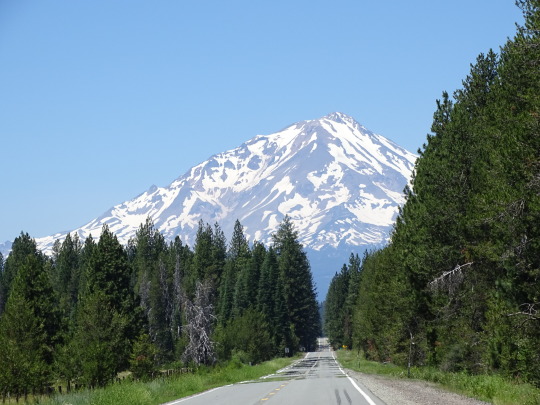

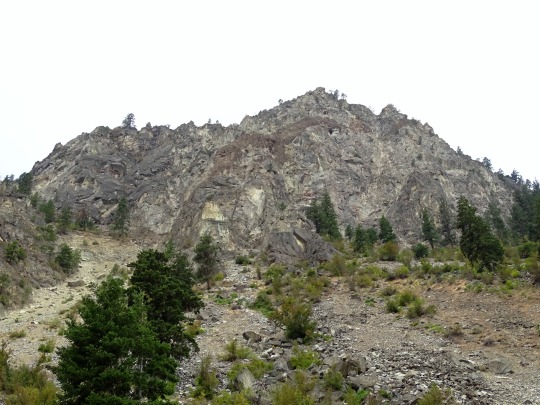


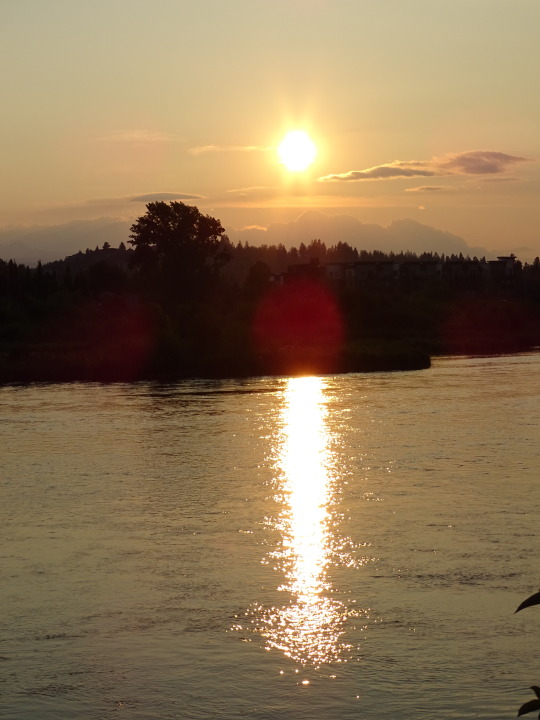

Earth Day
As threats to the Earth grow, so too do the global initiatives that seek to preserve it, whether through volunteer work, donations, or political lobbying.
Earth, due to human activity, is in trouble. The ozone layer is depleting, ecosystems are being lost and people are starving and dying of dehydration. Endangered species are disappearing rapidly, our water and air is becoming increasingly polluted, and weather systems are being pushed to the extreme.
A scary picture indeed, but thankfully one we can all do something about! Earth Day, one of the first global initiatives to protect and conserve the earth, has become an annual event that strives for positive change on a global scale. It aims to inspire individuals, communities, businesses and governments all over the world to take action and help preserve the planet.
History of Earth Day
As the world’s largest environmental movement and the most widely celebrated secular occasion, with over 1 billion people and more than 75,000 partners involved each year across almost 200 countries, Earth Day has gone from strength to strength over the course of its history.
Founder Gaylord Nelson, a former US senator, thought of the idea after witnessing the 1969 oil spill in Santa Barbara, California. Inspired by the vigor of the student anti-war movement, he believed it was essential that energy was shifted to concerns about air and water pollution.
Originally envisioned as a campus teach-in event, Senator Nelson enlisted youth activist Denis Hayes to help organize the first Earth Day in 1970, and the pair opted for 22 April due to where it fell in the academic year, ensuring that the maximum number of students would be able to take part.
Nelson, Hayes and their team were able to spread the message far and wide, including to the national media, and promote events across the US. The occasion was a massive success, with 20 million Americans taking to the streets to celebrate the first Earth Day. They demonstrated in support of the cause, and groups that had previously been rallying around environmental issues separately came together on the day due to their shared values.
The first Earth Day helped put environmental protection on the political agenda and bring about change. That same year the United States Environmental Protection Agency was set up, and soon after various legislation was passed, including the Clean Air, Clean Water and Endangered Species Acts.
It wasn’t until 1990 that Earth Day went global, spreading the message to 200 million people in over 140 countries. By the millennium it had reached more than 180 countries and involved hundreds of millions of participants worldwide. And of course the year 2020 marked the 50th anniversary of Earth Day.
2016’s Earth Day was a particularly special year, as it heralded the United Nations’ adoption of the Paris Agreement. Signed by 175 countries, this international treaty established legally binding targets for tackling the climate emergency, ensuring that as many nations as possible are working together to cut emissions and prevent global warming.
As a day of action, Earth Day aims to promote environmentalism through engagement, activism, education, policy changes and peaceful protest. It has focused on various themes over the years, such as climate change, trees, clean water and a healthy environment for children, and multiple organizations and venues host events that showcase the importance of caring for the environment.
This vital day teaches people about the consequences of their behavior on the places and ecosystems in which they live. And it’s not just about the damaging effects on the environment itself, but also about the impact on people’s health, access to food and water, safety and livelihoods. To get involved, people choose to make conscientious changes such as recycling more, using renewable fuel and conserving water.
Earth Day Timeline
1962
Rachel Carlson releases book Silent Spring
Raising public awareness for the plight of living organisms, Silent Spring makes its way up the New York Times bestseller list and sells more than ½ million copies in at least 24 countries.
1970
First Earth Day is celebrated
After witnessing a massive oil spill in California, Senator Gaylord Nelson from Wisconsin announces the idea of a teach-in on college campuses, choosing April 22 to fall between spring break and final exams to gain as much participation as possible. This bi-partisan event engaged 20 million Americans in working to protect the planet.
1990
Earth Day takes on the globe
Taking Earth Day around the world, just 20 years after the original event the participation increased ten-fold to include 200 million people from at least 140 countries.
1992
United Nations Earth Summit takes place
The United Nations Conference on Environment and Development (UNCED) meets in Rio de Janeiro to address issues of sustainability and provide opportunities for collaboration around the topic.
2000
Earth Day reaches record numbers
In celebration of the new millennium and the 30th anniversary of the observance, Earth Day includes 5000 environmental groups from 184 countries with activities all over the world.
How to celebrate Earth Day
There are a whole host of activities you can get involved in to mark this important occasion, not only around the globe but even in space! The Earth Day website allows people all over the world to find and share events designed to celebrate the day, from presentations and film screenings to cleanups and conservation efforts. This means that Earth Day enthusiasts can join things local to them or on the other side of the planet! And NASA often hosts an event from the International Space Station, for example livestreaming the image of our beautiful earth for all to see.
Another great way to celebrate Earth Day is by learning about what your actions do to the environment and why maintaining the earth’s ecosystems is vital to our survival. There’s a myriad of online resources – articles, quizzes, documentaries and so much more – to help us all find out more about our precious planet and the role we can play in protecting it.
If you feel able, why not donate money via Earth Day’s official website or to another environmental charity such as Greenpeace, the Rainforest Alliance or the Union of Concerned Scientists? Your support will help with a whole range of campaigns and projects, including pushing governments and businesses towards more environmentally friendly policies, preventing damaging practices such as deforestation and mining for fossil fuels and protecting those communities most vulnerable to the effects of climate change. You could also volunteer for local environmental groups and really make a difference where you live.
Above all, this occasion shouldn’t just be about one day, but rather a regular habit! Even the simplest of changes to our lifestyle can make a real difference. Switch to using an eco-friendly search engine, buy fruit and veg from the shop that isn’t wrapped in plastic, and put on an extra jumper rather than turning on the heating.
If you’re serious about the planet, then there’s plenty more you can do to live in a greener, more sustainable way, including powering your home with renewable energy, cycling and walking more and driving less (or buying an electric vehicle), reducing your meat and seafood consumption, recycling your waste, planting wildflowers in your garden for the bees and butterflies, and ensuring that your financial investments, for example, your pension fund, are contributing to green jobs and a green economy. Be sure to spread the word about National Earth Day through social media and let your friends and family know why protecting the earth is essential to you.
Earth Day FAQs
Is Earth Day international?
Yes! Although it is called Earth Day and it began in the US, the day is now celebrated and observed in a majority of the countries throughout the world–at least 193 countries.
How is Earth Day celebrated?
Individuals, groups, organizations and communities can all celebrate Earth Day by raising awareness, participating in sustainability projects, volunteering, making donations and so much more.
Is Earth Day always on April 22?
Yes! Ever since its inception in 1970, Earth Day has been celebrated annually on April 22. The original idea to reach college students made this the perfect time between spring break and finals.
Who created Earth Day?
Although the stage was set at the 1969 UNESCO Conference in San Francisco, the execution of the day can be credited to US Senator Gaylord Nelson who proposed an environmentally focused day for college campuses. The idea grew from there.
Where did Earth Day start?
The first ideas for Earth Day were formulated in the United States and meant to be observed as “teach-ins” on college campuses, but the idea quickly grew and it eventually turned into an international day including most of the countries on the planet.
Source
#travel#vacation#tourist attraction#landmark#InternationalMotherEarthDay#EarthDay#Earth Day#22 April#original photography#cityscape#landscape#countryside#Rocky Mountains#Alberta's Rockies#Northern Rockies#Canada#Alberta#Yukon#British Columbia#Oregon#Washington#California#USA#summer 2023#Jasper National Park#nature#flora
14 notes
·
View notes
Link
11 notes
·
View notes
Text
No paywall version here.
"Two and a half years ago, when I was asked to help write the most authoritative report on climate change in the United States, I hesitated...
In the end, I said yes, but reluctantly. Frankly, I was sick of admonishing people about how bad things could get. Scientists have raised the alarm over and over again, and still the temperature rises. Extreme events like heat waves, floods and droughts are becoming more severe and frequent, exactly as we predicted they would. We were proved right. It didn’t seem to matter.
Our report, which was released on Tuesday, contains more dire warnings. There are plenty of new reasons for despair. Thanks to recent scientific advances, we can now link climate change to specific extreme weather disasters, and we have a better understanding of how the feedback loops in the climate system can make warming even worse. We can also now more confidently forecast catastrophic outcomes if global emissions continue on their current trajectory.
But to me, the most surprising new finding in the Fifth National Climate Assessment is this: There has been genuine progress, too.
I’m used to mind-boggling numbers, and there are many of them in this report. Human beings have put about 1.6 trillion tons of carbon in the atmosphere since the Industrial Revolution — more than the weight of every living thing on Earth combined. But as we wrote the report, I learned other, even more mind-boggling numbers. In the last decade, the cost of wind energy has declined by 70 percent and solar has declined 90 percent. Renewables now make up 80 percent of new electricity generation capacity. Our country’s greenhouse gas emissions are falling, even as our G.D.P. and population grow.
In the report, we were tasked with projecting future climate change. We showed what the United States would look like if the world warms by 2 degrees Celsius. It wasn’t a pretty picture: more heat waves, more uncomfortably hot nights, more downpours, more droughts. If greenhouse emissions continue to rise, we could reach that point in the next couple of decades. If they fall a little, maybe we can stave it off until the middle of the century. But our findings also offered a glimmer of hope: If emissions fall dramatically, as the report suggested they could, we may never reach 2 degrees Celsius at all.
For the first time in my career, I felt something strange: optimism.
And that simple realization was enough to convince me that releasing yet another climate report was worthwhile.
Something has changed in the United States, and not just the climate. State, local and tribal governments all around the country have begun to take action. Some politicians now actually campaign on climate change, instead of ignoring or lying about it. Congress passed federal climate legislation — something I’d long regarded as impossible — in 2022 as we turned in the first draft.
[Note: She's talking about the Inflation Reduction Act and the Infrastructure Act, which despite the names were the two biggest climate packages passed in US history. And their passage in mid 2022 was a big turning point: that's when, for the first time in decades, a lot of scientists started looking at the numbers - esp the ones that would come from the IRA's funding - and said "Wait, holy shit, we have an actual chance."]
And while the report stresses the urgency of limiting warming to prevent terrible risks, it has a new message, too: We can do this. We now know how to make the dramatic emissions cuts we’d need to limit warming, and it’s very possible to do this in a way that’s sustainable, healthy and fair.
The conversation has moved on, and the role of scientists has changed. We’re not just warning of danger anymore. We’re showing the way to safety.
I was wrong about those previous reports: They did matter, after all. While climate scientists were warning the world of disaster, a small army of scientists, engineers, policymakers and others were getting to work. These first responders have helped move us toward our climate goals. Our warnings did their job.
To limit global warming, we need many more people to get on board... We need to reach those who haven’t yet been moved by our warnings. I’m not talking about the fossil fuel industry here; nor do I particularly care about winning over the small but noisy group of committed climate deniers. But I believe we can reach the many people whose eyes glaze over when they hear yet another dire warning or see another report like the one we just published.
The reason is that now, we have a better story to tell. The evidence is clear: Responding to climate change will not only create a better world for our children and grandchildren, but it will also make the world better for us right now.
Eliminating the sources of greenhouse gas emissions will make our air and water cleaner, our economy stronger and our quality of life better. It could save hundreds of thousands or even millions of lives across the country through air quality benefits alone. Using land more wisely can both limit climate change and protect biodiversity. Climate change most strongly affects communities that get a raw deal in our society: people with low incomes, people of color, children and the elderly. And climate action can be an opportunity to redress legacies of racism, neglect and injustice.
I could still tell you scary stories about a future ravaged by climate change, and they’d be true, at least on the trajectory we’re currently on. But it’s also true that we have a once-in-human-history chance not only to prevent the worst effects but also to make the world better right now. It would be a shame to squander this opportunity. So I don’t just want to talk about the problems anymore. I want to talk about the solutions. Consider this your last warning from me."
-via New York Times. Opinion essay by leading climate scientist Kate Marvel. November 18, 2023.
#WE CAN DO THIS#I SO TRULY BELIEVE THAT WE CAN DO THIS#WE CAN SAVE OURSELVES AND THE WORLD ALONG WITH US#climate crisis#united states#climate change#conservation#hope posting#sustainability#climate news#climate action#climate emergency#fossil fuels#global warming#environmentalism#climate hope#solarpunk#climate optimism#climate policy#earth#science#climate science#meteorology#extreme weather#renewable energy#solar power#wind power#renewables#carbon emissions#climate justice
33K notes
·
View notes
Text

"No climate justice on occupied land"
#feminist#social justice#free palestine#settler violence#settler colonialism#genocide#climate justice#climate action#climate crisis#climate change#greta thunberg#europe#politics#the hague#netherlands#global news
18K notes
·
View notes
Text

DR ADAM LEVY ClimateAdam
ROSEMARY MOSCO
#comic#climate change#climate science#climate action#climate crisis#doom scroll break#radical optimism#hope is a radical act
26K notes
·
View notes
Text
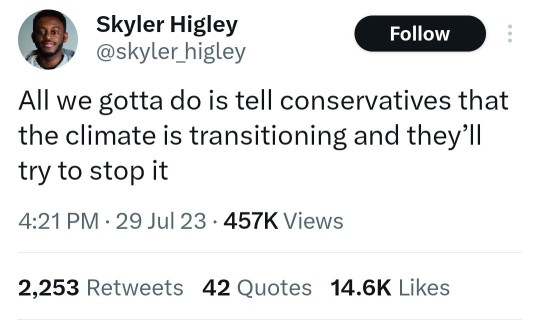
#lgbtq community#lgbtqia#lgbt pride#lgbtq#nonbinary#lesbian#queer#sapphic#nonbinary lesbian#gay girls#transition#trans women#trans#transgender#hrt#transitioning#climate change#climate emergency#climate action#environment#global warming#climate crisis#climate and environment#environmentalism
14K notes
·
View notes
Text
youtube
Watch the American Climate Leadership Awards 2023 now: https://youtu.be/fenns4Pfq_A
@ecoAmerica was excited to announce the ACLA23 runner-up, Mothers Out Front! Mothers Out Front builds the power of mothers as an organized constituency to push for transformational change on climate and energy policy in the US. Watch the top ten finalists, Jane Fonda, Vanessa Hauc, Bill McKibben, and more in the ACLA23 Broadcast Recording!
#ACLA23#YouTube#climate leaders#climate solutions#climate action#climate and environment#climate#climate and health#climate blog#climate change#climate activism#climate justice#climate news#weather and climate#environmental news#environment#environmental awareness#environmental activism#environmental justice#environmental#environment protection#environment and health#environmental health#Youtube
16K notes
·
View notes
Text


#keir starmer#leftism#socialism#ecosocialism#environment#environmetalists#climate change#climate crisis#climate#climate action#climate disaster#capitalism#anti capitalism#communism#britain
7K notes
·
View notes
Text
As relentless rains pounded LA, the city’s “sponge” infrastructure helped gather 8.6 billion gallons of water—enough to sustain over 100,000 households for a year.
Earlier this month, the future fell on Los Angeles. A long band of moisture in the sky, known as an atmospheric river, dumped 9 inches of rain on the city over three days—over half of what the city typically gets in a year. It’s the kind of extreme rainfall that’ll get ever more extreme as the planet warms.
The city’s water managers, though, were ready and waiting. Like other urban areas around the world, in recent years LA has been transforming into a “sponge city,” replacing impermeable surfaces, like concrete, with permeable ones, like dirt and plants. It has also built out “spreading grounds,” where water accumulates and soaks into the earth.
With traditional dams and all that newfangled spongy infrastructure, between February 4 and 7 the metropolis captured 8.6 billion gallons of stormwater, enough to provide water to 106,000 households for a year. For the rainy season in total, LA has accumulated 14.7 billion gallons.
Long reliant on snowmelt and river water piped in from afar, LA is on a quest to produce as much water as it can locally. “There's going to be a lot more rain and a lot less snow, which is going to alter the way we capture snowmelt and the aqueduct water,” says Art Castro, manager of watershed management at the Los Angeles Department of Water and Power. “Dams and spreading grounds are the workhorses of local stormwater capture for either flood protection or water supply.”
Centuries of urban-planning dogma dictates using gutters, sewers, and other infrastructure to funnel rainwater out of a metropolis as quickly as possible to prevent flooding. Given the increasingly catastrophic urban flooding seen around the world, though, that clearly isn’t working anymore, so now planners are finding clever ways to capture stormwater, treating it as an asset instead of a liability. “The problem of urban hydrology is caused by a thousand small cuts,” says Michael Kiparsky, director of the Wheeler Water Institute at UC Berkeley. “No one driveway or roof in and of itself causes massive alteration of the hydrologic cycle. But combine millions of them in one area and it does. Maybe we can solve that problem with a thousand Band-Aids.”
Or in this case, sponges. The trick to making a city more absorbent is to add more gardens and other green spaces that allow water to percolate into underlying aquifers—porous subterranean materials that can hold water—which a city can then draw from in times of need. Engineers are also greening up medians and roadside areas to soak up the water that’d normally rush off streets, into sewers, and eventually out to sea...
To exploit all that free water falling from the sky, the LADWP has carved out big patches of brown in the concrete jungle. Stormwater is piped into these spreading grounds and accumulates in dirt basins. That allows it to slowly soak into the underlying aquifer, which acts as a sort of natural underground tank that can hold 28 billion gallons of water.
During a storm, the city is also gathering water in dams, some of which it diverts into the spreading grounds. “After the storm comes by, and it's a bright sunny day, you’ll still see water being released into a channel and diverted into the spreading grounds,” says Castro. That way, water moves from a reservoir where it’s exposed to sunlight and evaporation, into an aquifer where it’s banked safely underground.
On a smaller scale, LADWP has been experimenting with turning parks into mini spreading grounds, diverting stormwater there to soak into subterranean cisterns or chambers. It’s also deploying green spaces along roadways, which have the additional benefit of mitigating flooding in a neighborhood: The less concrete and the more dirt and plants, the more the built environment can soak up stormwater like the actual environment naturally does.
As an added benefit, deploying more of these green spaces, along with urban gardens, improves the mental health of residents. Plants here also “sweat,” cooling the area and beating back the urban heat island effect—the tendency for concrete to absorb solar energy and slowly release it at night. By reducing summer temperatures, you improve the physical health of residents. “The more trees, the more shade, the less heat island effect,” says Castro. “Sometimes when it’s 90 degrees in the middle of summer, it could get up to 110 underneath a bus stop.”
LA’s far from alone in going spongy. Pittsburgh is also deploying more rain gardens, and where they absolutely must have a hard surface—sidewalks, parking lots, etc.—they’re using special concrete bricks that allow water to seep through. And a growing number of municipalities are scrutinizing properties and charging owners fees if they have excessive impermeable surfaces like pavement, thus incentivizing the switch to permeable surfaces like plots of native plants or urban gardens for producing more food locally.
So the old way of stormwater management isn’t just increasingly dangerous and ineffective as the planet warms and storms get more intense—it stands in the way of a more beautiful, less sweltering, more sustainable urban landscape. LA, of all places, is showing the world there’s a better way.
-via Wired, February 19, 2024
#california#los angeles#water#rainfall#extreme weather#rain#atmospheric science#meteorology#infrastructure#green infrastructure#climate change#climate action#climate resilient#climate emergency#urban#urban landscape#flooding#flood warning#natural disasters#environmental news#climate news#good news#hope#solarpunk#hopepunk#ecopunk#sustainability#urban planning#city planning#urbanism
13K notes
·
View notes
Text
hey uh so I haven't seen anyone talking about this here yet, but
the amazon river, like the biggest river in the fucking world, in the middle of the amazon fucking rainforest, is currently going through its worst drought since the records began 121 years ago

picture from Folha PE
there's a lot going on but I haven't seen much international buzz around this like there was when the forest was on fire (maybe because it's harder to shift the narrative to blame brazil exclusively as if the rest of the world didn't have fault in this) so I wanted to bring this to tumblr's attention
I don't know too many details as I live in the other side of the country and we are suffering from the exact opposite (at least three cyclones this year, honestly have stopped counting - it's unusual for us to get hit by even one - floods, landslides, we have a death toll, people are losing everything to the water), but like, I as a brazilian have literally never seen pictures of the river like this before. every single city in the amazonas state is in a state of emergency as of november 1st.
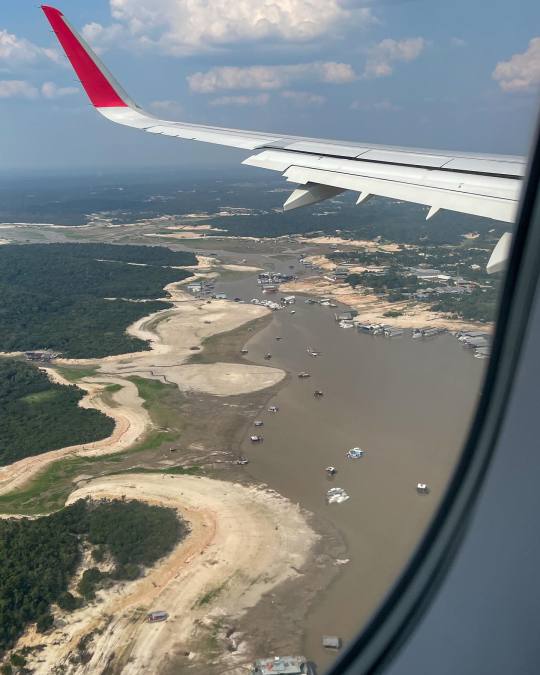

pictures by Adriano Liziero (ig: geopanoramas)
we are used to seeing images of rio negro and solimões, the two main amazon river affluents, in all their grandiose and beauty and seeing these pictures is really fucking chilling. some of our news outlets are saying the solimões has turned to a sand desert... can you imagine this watery sight turning into a desert in the span of a year?

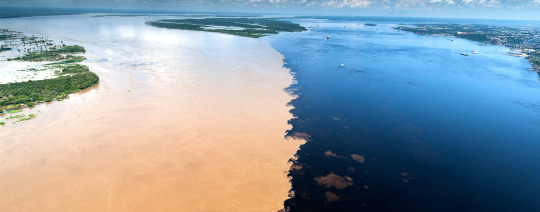
while down south we are seeing amounts of rain and hailstorms the likes of which our infrastructure is simply not built to deal with, up north people who have built everything around the river are at a loss of what to do.
the houses there that are built to float are just on the ground, people who depend on fishing for a living have to walk kilometers to find any fish that are still alive at all, the biodiversity there is at risk, and on an economic level it's hard to grasp how people from the northern states are getting by at all - the main means of transport for ANYTHING in that region is via the river water. this will impact the region for months to come. it doesnt make a lot of sense to build a lot of roads bc it's just better to use the waterway system, everything is built around or floats on the river after all. and like, the water level is so incomprehensibly low the boats are just STUCK. people are having a hard time getting from one place to another - keep in mind the widest parts of the river are over 10 km apart!!
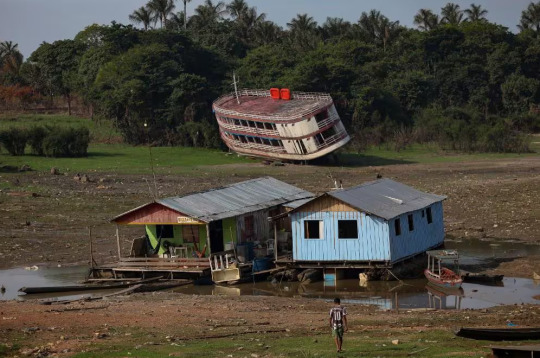
this shit is really serious and i am trying not to think about it because we have a different kind of problem to worry about down south but it's really terrifying when I stop to think about it. you already know the climate crisis is real and the effects are beyond preventable now (we're past global warming, get used to calling it "global boiling"). we'll be switching strategies to damage control from now on and like, this is what it's come to.
I don't like to be alarmist but it's hard not to be alarmed. I'm sorry that I can't end this post with very clear intructions on how people overseas can help, there really isn't much to do except hope the water level rises soon, maybe pray if you believe in something. in that regard we just have to keep pressing for change at a global level; local conditions only would not, COULD NOT be causing this - the amazon river is a CONTINENTAL body of water, it spans across multiple countries. so my advice is spread the word, let your representatives know that you're worried and you want change towards sustainability, degrowth and reduced carbon emissions, support your local NGOs, maybe join a cause, I don't know? I recommend reading on ecological and feminist economics though
however, I know you can help the affected riverine families by donating to organizations dedicated to helping the region. keep in mind a single US dollar, pound or euro is worth over 5x more in our currency so anything you donate at all will certainly help those affected.
FAS - Sustainable Amazon Fundation
Idesam - Sustainable Developent and Preservation Institute of Amazonas
Greenpeace Brasil - I know Greenpeace isn't the best but they're one of the few options I can think of that have a bridge to the international world and they are helping directly
There are a lot of other smaller/local NGOs but I'm not sure how you could donate to them from overseas, I'll leave some of them here anyway:
Projeto Gari
Caritás Brasileira
If you know any other organizations please link them, I'll be sure to reblog though my reach isn't a lot
thank you so much for reading this to the end, don't feel obligated to share but please do if you can! even if you just read up to here it means a lot to me that someone out there knows
also as an afterthought, I wanted to expand on why I think this hasn't made big news yet: because unlike the case of the 2020 forest fires, other countries have to hold themselves accountable when looking at this situation. while in 2020 it was easier to pretend the fires were all our fault and people were talking about taking the amazon away from us like they wouldn't do much worse. global superpowers have no more forests to speak of so I guess they've been eyeing what latin america still has. so like this bit of the post is just to say if you're thinking of saying anything of the sort, maybe think of what your own country has done to contribute to this instead of blaming brazil exclusively and saying the amazon should be protected by force or whatever
#solarpunk#sustainability#environmentalism#climate change#climate crisis#global warming#amazon rainforest#amazon river#geography#brazil#degrowth#punk#global boiling#ecopunk#anti capitalism#climate action#climate activism#the world does not die on my watch#i saw someone use that tag and uh i like it we should make it a thing#long post#:/ sorry i know no one likes lengthy bad news posts on their dashes but i've been thinking about this quite a bit#and i don't really know what to do to help bc i don't have money to donate and i am 10 thousand km away#i think i could be doing more to help but i am already trying my best#again dont feel obligated to share or read this but it would be nice and i would love you forever#have removed lbv from the post
7K notes
·
View notes
Text
Hi! Just wanna raise some awareness here because South America is on fucking fire and I need to see more people talking about this.

Source: RSOE EDIS x
Im just going to talk about the ones i'm closest to, but if you know about these fires, feel free to add in the reblogs!
Chile
In Chile there's (up to Feb 5) 160 wild fires, of which 40 are still trying to be controlled by authorities. The president, Gabriel Boric, has declared State of Emergency in the whole country, and theres a Red Alert Code in most part of the country.
Isla de Chiloé, Southern Chile (900 km away from Santiago de Chile)
This is a (recently controlled) fire that lasted a week, but many neighborhoods were burnt to the ground.
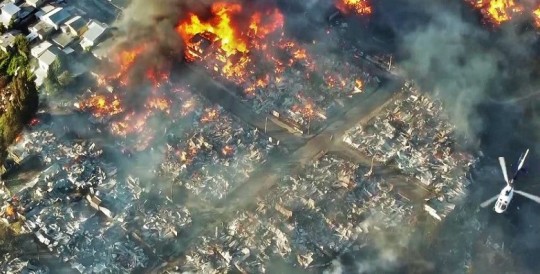

The whole South is in red alert for constant sudden fires that spread quickly due to the lack of rain and the elevated temperatues in the zone. Just today, two fires had to be controlled in the main land next to this island, and more are being reported in the Los Lagos region. This is added to the "controlled" intentional fires that farmers make to clean their fields of old crops along the Central-South parts of the country, mostly surrunding the main route, Ruta 5, that connects the whole country, thus making it hard to see and breathe because of the smoke. (flashnews, most of them get out of control quickly.)
Valparaiso/Viña del Mar, Central Chile (100 km away from Santiago de Chile)

A fire that started on Friday 2nd and grew exponentially because of the wind and the dry, hot climate. More than 100 people are dead, with 70 unrecognized bodies and other 400 that have dissapeared. At least 30000 people that have lost everything to the fire.
There's massive evacuations from this and the neighboring city, Viña Del Mar.
This is said to be the second most deadly fire in the century, surpased by Australia in 2009.
45000+ hectares that include land and neighborhoods have been burnt down.
I could go on about this one, so more info here and here
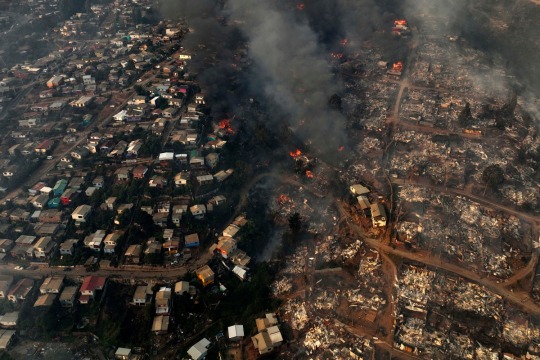

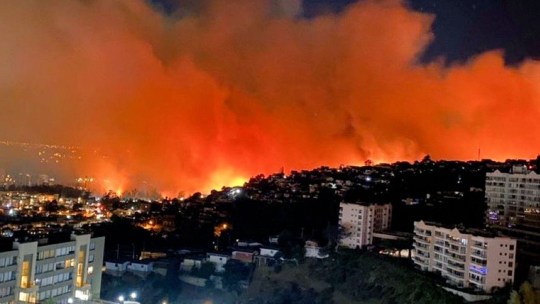
Argentina
Parque Los Alerces (Esquel), Chubut
The fire strarted on the 25th January, and the climate has made it hard to contain. 3000 hectares of native forest have been burnt to teh ground. It is now growing in the direction of the nearest city, Esquel. Theres been evacuations between yesterday and today (4 and 5th Febuary)

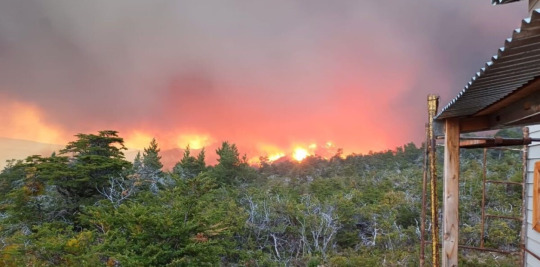
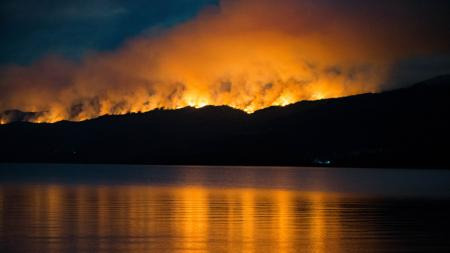
Parque Nahuel Huapi (Bariloche), Río Negro
The reason why im writing this. The city woke up today covered in smoke after a wildfire developed yesterday during the night. The reason? A fireplace that was not turned off in a place where people cannot disembark and can only be reached via boats.
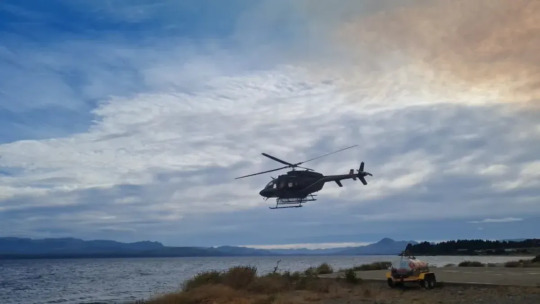


As of now, there's not much information about the fire but hopefully the firefighters will be able to contain it before it reaches Tronador Mountain, where an ancient glaciar is.
...which leads me to the other point i wanted to talk about.
Firefighters
They volunteer to do this job.
In Argentina and Chile, firefighting is not rewarded with a salary, and most of the times they dont even have full firehouses to stay in. These people are at their houses, ready to jump into action and run to the station the second the alarm goes off.
They are neighbors, people that risk their lives and run into danger willingly, just because they want to help the community.
I felt the need to give a shout-out to these people and say:
Don't be a fucking dick, don't start fires in the woods unless it's an approved place, and if you do, TURN IT OFF.
Pour abundant water on it, and do not stop when you don't see any more flames.
Keep pouring water until the ashes don't burn/feel like room temperature in your hand if you put it 10 cm away from it, and even then, pour some more just to be sure.
No heat and no smoke mean a safely extinguished fire.
Save lives and forests.
#dont even get me started on the denial of climate change from my president#didnt wanna get political here#argentina#chile#argieposting#argieblr#soff speaks#wildfires
6K notes
·
View notes
Photo
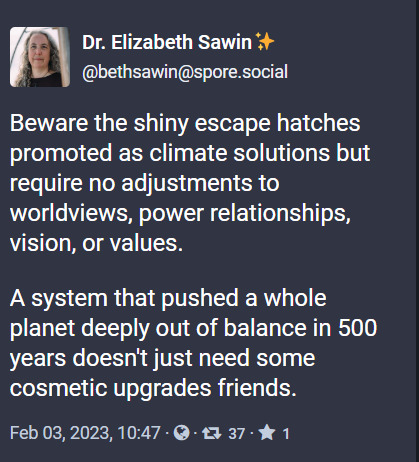
5K notes
·
View notes